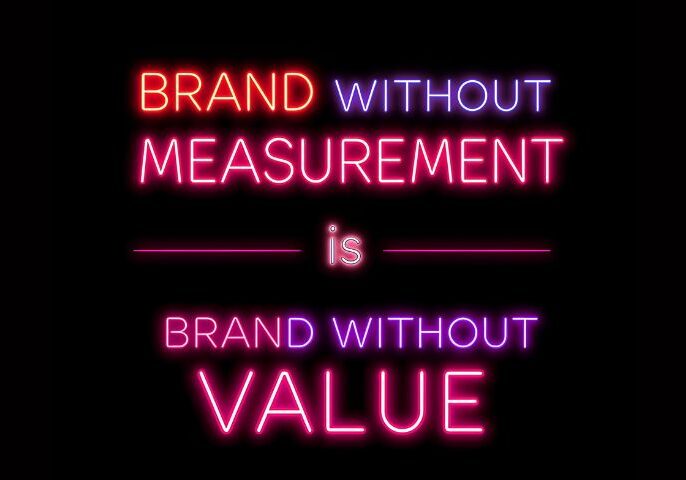Most organisations treat PR and SEO as separate marketing activities. They run parallel campaigns, measure different metrics, and often compete for the same budget allocation. But what if this traditional approach is leaving significant opportunities on the table?
The reality is that PR and SEO work most powerfully when they’re orchestrated together. Not as an afterthought or tactical add-on, but as a strategic partnership that creates compound benefits neither discipline can achieve alone.
The Authority Building Connection
Search engines increasingly reward websites that demonstrate genuine expertise and trustworthiness. SEO isn’t just about technical optimisation or keyword density anymore. Google’s algorithms have become sophisticated enough to recognise the difference between manufactured authority and the real thing.
This is where PR becomes invaluable for SEO success. When respected industry publications feature your organisation, when journalists quote your expertise, when thought leaders reference your work, you’re building the kind of third-party validation that search engines notice and reward.
Consider the difference between a backlink from a directory listing and one from a Financial Times article discussing your innovative approach to client service. Both are technically links, but the context, audience, and editorial standards tell a completely different story about your organisation’s credibility.
Strategic Content Amplification
Even well-optimised content that ranks effectively can reach far more people when it becomes part of wider industry conversations. PR transforms your content from single touchpoints into multi-channel discussions, exponentially extending your reach.
When you publish insights about industry trends on your website, you’re creating valuable content that serves your audience’s search needs. When those same insights are featured in trade publications, discussed on podcasts, and referenced in conference presentations, they become part of a broader conversation. Each mention, citation, and reference creates additional pathways for people to discover your organisation, while reinforcing your search authority.
This amplification effect works particularly well for professional services firms and mission-driven organisations, where expertise and values differentiation matter more than price competition.
The Search Behaviour Shift
People’s search behaviour has evolved beyond simple keyword queries. They’re looking for organisations they can trust, experts they can rely on, partners who understand their challenges. In other words, brand searches and reputation-related queries have become increasingly important ranking factors.
PR activities directly influence this behaviour. When someone reads about your organisation in their industry newsletter, they’re more likely to search for your brand specifically. When they see your CEO quoted in a relevant article, they might search for your company name alongside their particular challenge.
These branded searches signal to search engines that people actively seek out your organisation, which strengthens your overall search visibility across all relevant topics.
Measurable Integration Strategies
The most effective PR-SEO integration happens at the strategic level, not just through tactical coordination. This means:
Content Strategy Alignment
Your thought leadership topics should reflect the keywords and themes your target audience searches for. But rather than forcing keywords into PR materials, identify the natural overlap between what journalists want to cover and what your audience needs to know.
This alignment requires understanding three distinct but overlapping perspectives. Your target audience has specific challenges they’re actively researching and problems they need to solve. Journalists have editorial priorities, trending topics, and audience interests they need to serve. Your organisation has expertise, insights, and solutions that could address both needs.
The most effective content strategy emerges from the intersection of these three areas. When your chief executive writes about emerging regulatory changes affecting your sector, that content can simultaneously serve a journalist’s need for expert commentary, your audience’s need for practical guidance, and your organisation’s need to demonstrate deep industry knowledge. This natural alignment creates content that feels authentic rather than manufactured for marketing purposes.
Avoid the temptation to reverse-engineer content from keyword research alone. Search data tells you what people are looking for, but it doesn’t guarantee that journalists will find those topics compelling or that your organisation can add meaningful value to those conversations. Instead, start with topics where your expertise genuinely shines, then optimise the presentation and distribution to serve both PR and SEO objectives.
This approach takes longer to develop than simply targeting high-volume keywords, but it creates thought leadership that builds genuine authority rather than temporary visibility.
Relationship Mapping
The publications your target clients read are likely the same ones that can drive valuable SEO traffic. This alignment isn’t coincidental – it reflects where genuine expertise gets recognised and where your audience actively seeks information.
However, identifying these publications and building meaningful relationships with journalists takes considerable time and strategic thinking.
The investment in building these relationships properly pays dividends over time. When journalists know your organisation as a reliable source of insight, they’re more likely to include you in trend pieces, quote you in breaking news stories, and consider your thought leadership for feature articles. This sustained visibility creates cumulative SEO benefits that sporadic, opportunistic coverage simply cannot match.
Focus your PR efforts on outlets that serve both objectives rather than chasing any available coverage. A single relationship with the right trade publication can generate more valuable exposure than dozens of mentions in publications your clients never read.
Long-term Authority Building
Instead of treating each PR campaign as an isolated activity, build sustained visibility around core areas of expertise. This approach creates cumulative SEO benefits as your organisation becomes associated with specific topics and solutions.
Authority building works differently from campaign-based marketing. Rather than launching discrete initiatives with defined start and end dates, it requires consistent contribution to industry conversations over months and years. When your organisation repeatedly provides valuable insights on specific challenges, journalists begin to see you as the natural expert to contact when those topics arise.
This consistency signals to search engines that your organisation has genuine expertise in these areas. Google’s algorithms increasingly recognise patterns of citation and reference across multiple authoritative sources. When respected publications consistently link your organisation to particular topics, it strengthens your search visibility for related queries far beyond what isolated mentions could achieve.
The most effective approach involves identifying three to five core expertise areas where your organisation can genuinely add value to industry discussions. Then systematically build thought leadership around these themes through research, commentary, and practical insights. Each piece of coverage reinforces the previous ones, creating a compound effect that establishes your organisation as the definitive voice on these topics.
This patience for long-term impact requires discipline, but it creates sustainable competitive advantages that are much harder for competitors to replicate than short-term campaign successes.
Beyond the Obvious Metrics
Most organisations measure PR success through reach and sentiment, whilst SEO gets evaluated on rankings and traffic. But integrated campaigns reveal more sophisticated success indicators.
Watch for increases in direct traffic following PR campaigns. Monitor branded search volume spikes after major coverage. Track how referral traffic from earned media performs compared to other sources. These metrics reveal how PR activities influence the entire customer discovery journey, not just awareness.
The strongest results often appear months after initial PR activities, as the authority and trust signals compound over time. This patience for long-term impact aligns perfectly with values-driven organisations that understand that sustainable growth requires building a genuine reputation rather than gaming short-term metrics.
Getting Started Without Overwhelming Your Team
You don’t need to revolutionise your entire marketing approach overnight. The strongest results often come from thoughtful coordination rather than wholesale restructuring.
If you’re working with separate PR and SEO specialists, start by ensuring they share intelligence regularly. When PR secures an interview opportunity, brief the spokesperson on the key topics your audience is searching for. Additionally, when SEO identifies trending topics in your sector, alert PR to potential story angles. This simple coordination can dramatically improve the effectiveness of both activities.
However, the most seamless integration happens when a single strategic mind orchestrates both disciplines. Whether that’s an experienced CMO who understands both areas, or an external partner who can coordinate specialist expertise, having someone at the centre who sees the bigger picture eliminates the friction that naturally occurs between separate teams pursuing separate objectives.
Create content that naturally aligns with both objectives. In-depth industry reports, original research, and expert commentary attract both journalists’ attention and search traffic when they genuinely serve your audience’s needs rather than just checking marketing boxes.
This coordinated approach requires measuring the combined impact rather than evaluating each discipline in isolation. The organisations seeing the strongest results recognise that sustainable marketing success comes from orchestrating complementary expertise, not maximising individual channel performance. Someone needs to own that orchestration, whether internally or through a strategic partner who understands how these elements work together.
The Strategic Advantage
For organisations competing on expertise rather than price, the PR-SEO combination creates a sustainable competitive advantage. It’s much easier for competitors to copy your pricing or replicate your service offering than to match the authority and trust you’ve built through consistent, valuable contributions to industry conversations.
This integration works particularly well for organisations where reputation and relationships drive business success. When your target clients are researching solutions, they’re not just comparing features and prices. They’re evaluating which organisation they trust to understand their challenges and deliver meaningful results.
Ready to explore how this strategic approach could amplify your organisation’s impact?






